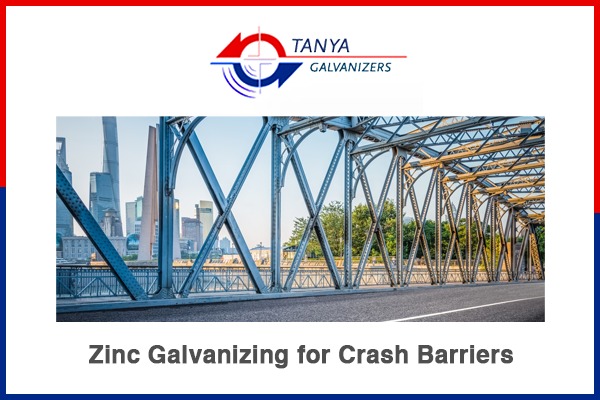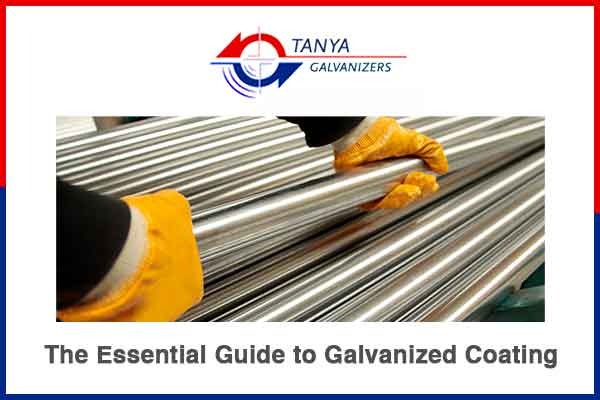Crash barrier are essential safety features on roads, designed to prevent vehicles from veering off the road and to minimize the impact of collisions. Ensuring their durability and effectiveness is critical for road safety.
Zinc galvanizing, a process that involves coating steel with a layer of zinc, has proven to be an effective method for enhancing the longevity and performance of crash barriers. This blog delves into how zinc galvanizing protects crash barriers and ultimately saves lives.
Crash Barrier for Road Safety
Crash barrier are engineered to absorb and dissipate the energy of a vehicle impact, reducing the risk of serious injuries or fatalities. They are commonly found on highways, bridges, and sharp curves where the likelihood of accidents is high. The effectiveness of these barriers is contingent upon their structural integrity and resistance to environmental factors such as corrosion.
The Process of Zinc Galvanizing
Zinc galvanizing involves immersing steel components in molten zinc, forming a metallurgical bond that results in a robust and corrosion-resistant coating. This process can be divided into several stages:
- Surface Preparation: The steel surface is cleaned to remove impurities, rust, and scale through processes like degreasing, pickling, and fluxing.
- Galvanizing: The cleaned steel is dipped into a bath of molten zinc, which reacts with the steel to form multiple layers of zinc-iron alloy.
- Cooling and Inspection: The coated steel is cooled and inspected for uniformity and coating thickness.
Benefits of Zinc Galvanizing for Crash Barriers
- Corrosion Resistance: Zinc galvanizing provides superior protection against corrosion. The zinc coating helps in preventing moisture along with other corrosive elements from reaching the steel. This is particularly important for crash barriers exposed to harsh weather conditions, de-icing salts, and pollutants.
- Long-Lasting Protection: Galvanized steel can last several decades without significant maintenance, ensuring that crash barriers remain functional over extended periods. This longevity reduces the need for frequent replacements and repairs, which can be costly and disruptive to traffic.
- Sacrificial Protection: Zinc galvanizing offers sacrificial protection, meaning that the zinc layer will corrode preferentially to the steel. Even if the coating is damaged, one does not have to worry. As the exposed steel will remain protected by the surrounding zinc. Such a process helps in prolonging the barrier’s lifespan.
- Impact Resistance: The metallurgical bond formed during the galvanizing process enhances the impact resistance of the steel, making crash barriers more robust in the event of a collision. This ensures that the barriers can effectively absorb and dissipate impact energy, reducing the severity of accidents.
- Cost-Effectiveness: While the initial cost of galvanizing might be higher than other protective coatings, the long-term savings are substantial. Reduced maintenance, longer service life, and decreased frequency of replacements make zinc galvanizing a cost-effective solution for crash barriers.
Case Studies and Real-World Applications
Several real-world examples highlight the effectiveness of zinc-galvanized crash barriers. For instance, in coastal regions where saltwater exposure accelerates corrosion, galvanized crash barriers have demonstrated remarkable durability and performance. Similarly, in areas with extreme weather conditions, such as heavy snowfall or high humidity, galvanized barriers have maintained their integrity and continued to provide reliable protection.
Environmental Considerations
Zinc galvanizing is an environmentally friendly process. Zinc is a naturally occurring element that is essential for all living organisms, and the galvanizing process produces minimal waste. Additionally, galvanized steel is fully recyclable.
Conclusion
Zinc galvanizing plays a pivotal role in enhancing the safety and longevity of crash barriers. By providing superior corrosion resistance, impact durability, and cost-effectiveness, galvanized crash barriers ensure that our roads are safer and more reliable. Investing in zinc-galvanized crash barriers is not just a financial decision but a commitment to saving lives and protecting infrastructure for years to come.


